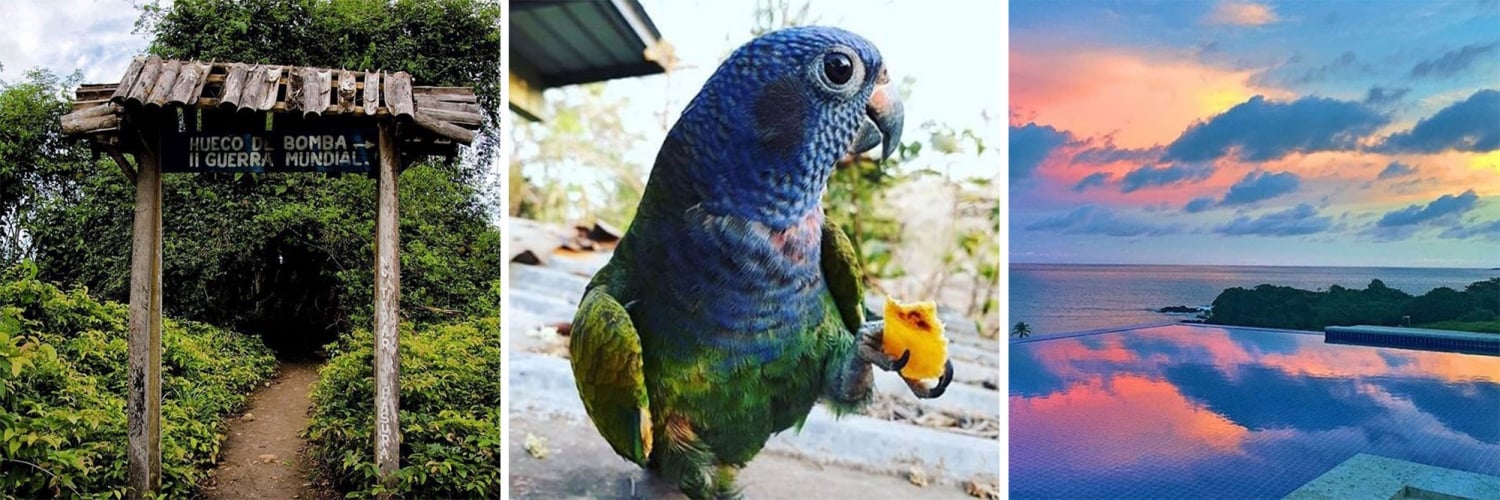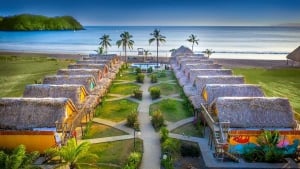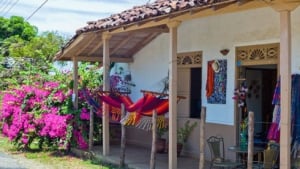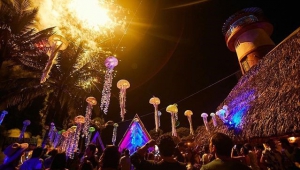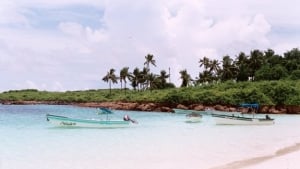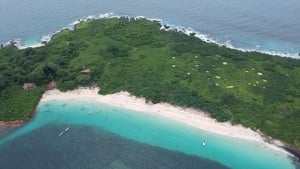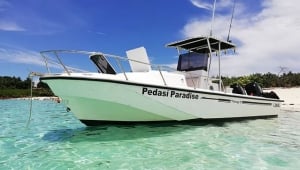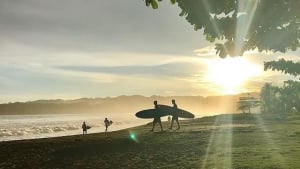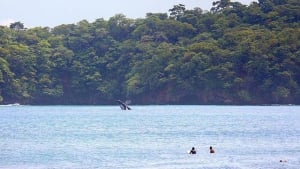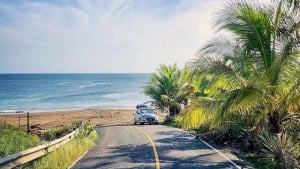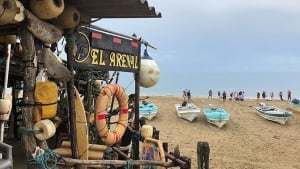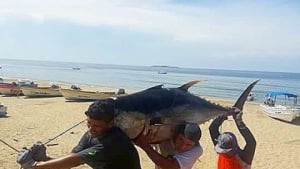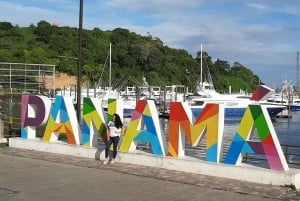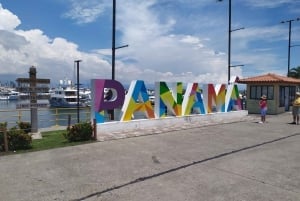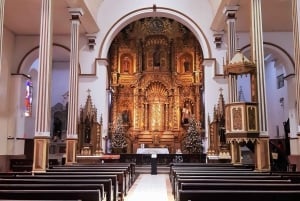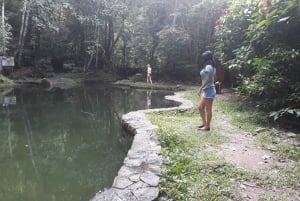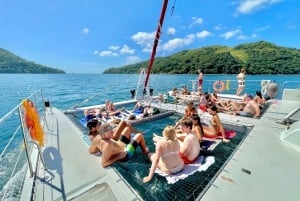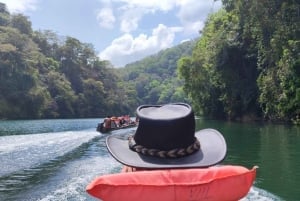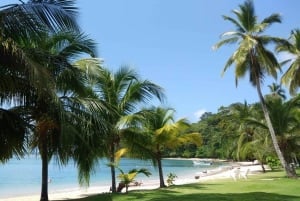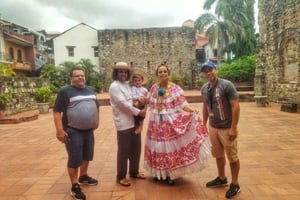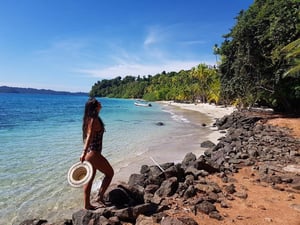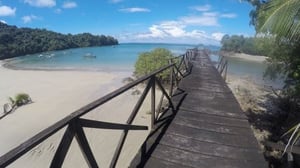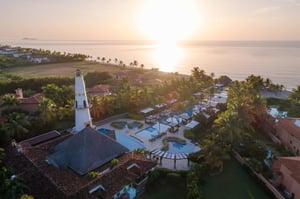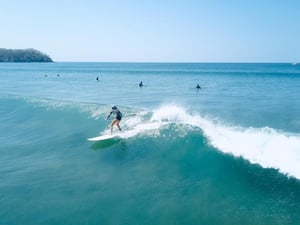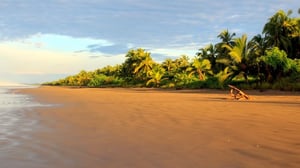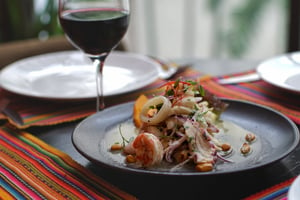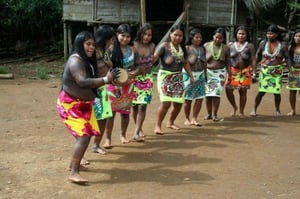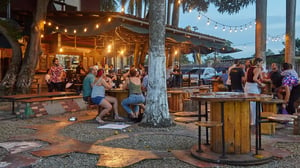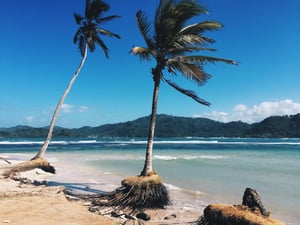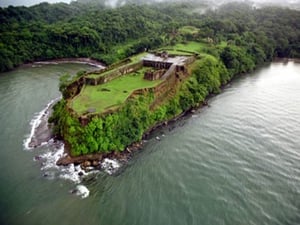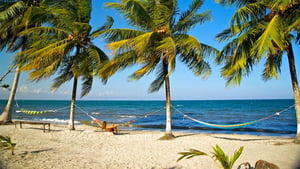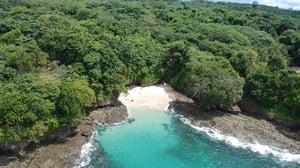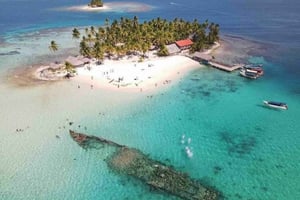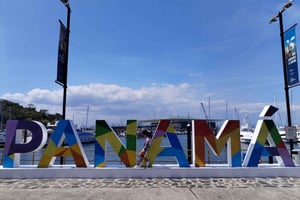Los Santos
Province of Los Santos
Panamanian province, located south of the Azuero peninsula. It has an area of 3 809.4 km² and a population of 89,592 inhabitants. Despite being one of the smallest provinces in the country, it is one of the most important in terms of agricultural and livestock development. It is considered, together with the province of Herrera, as the cradle of Panamanian traditions and folklore. The city of Las Tablas is its capital.
The province takes its name from its ancient capital, the Villa de Los Santos, founded on November 1, 1569, the All Saints Day, a Catholic celebration instituted in honor of all saints, known and unknown. We can distinguish three different regions: the mountain area dominated by the mountains of Azuero and Canajagua, which are an extension of the Central Highlands; an intermediate zone of hills and fluvial valleys, the most important being the Tonosí, Rico valley and the La Villa river. The coastal plains and sedimentary basins, which are separated from the highlands by the intermediate zone.
Climate:
It’s mainly a tropical savanna climate with moderate temperatures, strongly influenced by the winds of the ocean crashing against the mountains, and the Humboldt Current. January is the early beginning of the dry season: sunny, breezy, and green all around!
January is a truly magical time in the province of Los Santos, and the natural world sings its joy through madroño bushes and evergreen veranera flowers. Everything radiates content and happiness because the season speaks of better days, and summer has arrived.
The Highest Points of Los Santos:
Its highest point is located at the peak of Cerro Hoya at 1559 meters. Other major peaks are Cerro Cambutal (1400 meters), and Cerro Los Ñopos (1068 meters), Cerro Quema (959 meters) and Cerro Canajagua (830 meters).
Isla Iguana is located southeast of the Azuero Peninsula in the District of Peadasí in the Province of Los Santos only 4 kilometers from the coast. The island has a coral reef of 16 hectares, the largest in the Gulf of Panama with 11 coral species of 4,800 years of age and more than 500 species of fish. Thanks to this it is a true paradise for lovers of snorkeling and diving. Just swim a little from the beach and you can admire a lot of different corals and schools of fish of all colors. The beaches are white sand and crystal clear and warm waters represent another great attraction for visitors. The area of the island can be described as a dry tropical forest formed by shrubs bristling with thorns, tall grasses, cactus, and coconut trees. It is possible to walk to the other side of the island through some paths to El Faro beach. This beach is exposed to ocean currents and winds and as it turns out sometimes it has big waves. That's why it's better to swim and snorkel at El Cirial beach in the west of the island.
In the end, some tips: on the island has no water, restaurant, electricity then you must carry everything you need as food, enough water to drink, sunscreen, mosquito repellent, swimsuit, mask to practice snorkeling and etcetera.
How to get
- By car Leaving from Panama City, it takes about five hours to drive to the town of Pedasi. Take the Pan-American Highway to Divisa, then turn south towards Chitré. The road passes through several towns: Parita, La Villa de Los Santos, Guararé, Las Tablas among others. The road to Pedasí is straight, new, and well paved. Very close to the Pedasí entrance, just before the petrol station turn left to drive to the Arenal and go straight for about 3 kilometers along the paved road in good condition until you reach the El Arenal beach. Here you can rent a boat to navigate the five kilometers that separate Isla Iguana from El Arenal beach.
- By bus, The El Arenal beach where you can take a boat to Isla Iguana is located only 3 kilometers from the town of Pedasí. To get to this point you just have to board transport from the Albrook Terminal of Panama - Las Tablas - Pedasí route. From Pedasí you can walk an hour to get to the beach or take a taxi to take you there.
Cerro Hoya National Park the oldest known rocks of Panama are located in the extreme southwest of the Azuero Peninsula, a region that includes part of the Cerro Hoya National Park in Los Santos. According to some studies, rocks from the quartz-diorite group with an approximate age of 69 million years have been found there. Geologically, Los Santos is limited to the south by the Panama belt, with the Azuero canyon a few kilometers from the coast. The main tectonic faults are the Azuero-Soná fault and the Tonosí fault.
- Flora; The typical vegetation of Los Santos is the dry tropical forest characterized by evergreen and deciduous vegetation, adapted to the long period of drought, and also humid tropical forest, which can be classified as semi-deciduous. In the dry tropical forest, there are abundant bitter cedar, laurel, guácimo, guayacán, mahogany, carob, and oak trees. The dominant species in the humid tropical forest are mahogany, guayacan, oak, hawthorn cedar, and Ceiba. About the vegetation associated with the coastal zone and marshland, some species of mangrove trees are of particular interest, among which the white mangrove and red mangrove predominates. Fruit trees such as mango, cashew, medlar, caimito, coconut, orange, guava, lemon, pineapple, plum, tamarind, fig, almond, and others are also highly appreciated.
- Fauna; Among the carnivorous mammals we can find the jaguar and the cougar. Other species are the ocelot, the black cat, the raccoon, and the coyote. The most frequent herbivorous mammals are white-tailed deer and roe deer. Other mammals, such as the armadillo, are typical of the Sierra de Azuero. In Los Santos, we can find five of the seven species of monkeys that inhabit the country, including the monkey or white face, monkey marmoset, Spider Monkey of Azuero, and howler monkey of Azuero. Among the reptiles, the main species are the green iguana, the black iguana, the boa, the spectacled caiman, and the American alligator. There is also a large number of species of waterfowl in the rivers, among which we can find the kingfisher. Hummingbirds, hawks, parrots, herons, ducks, and pigeons abound in the undergrowth. One of the most important characteristics of this region is the diversity of its marine fauna. On Iguana Island we can observe species such as the humpback whale, the spotted Atlantic dolphin, and the bottlenose dolphin. The south of the province is recognized as a spawning place for numerous species of Pacific sea turtles, among which green turtles, loggerheads, and hawksbills predominate. The most common fish species are snapper, grouper, painted brunette, among other species. On the reefs, lobsters are common.
- Cultural and Regional Attraction you must do and see in Los Santos Province, Panama
- Best places to stay in Los Santos Province, Panama
- Things to do in Los Santos Province, Panama


